Plan checklist
Tim Egan
819 Egan Line, Stoqua Creek
Planting plan created by Muskrat Watershed Council
Funded by • Ontario Trillium Foundation •
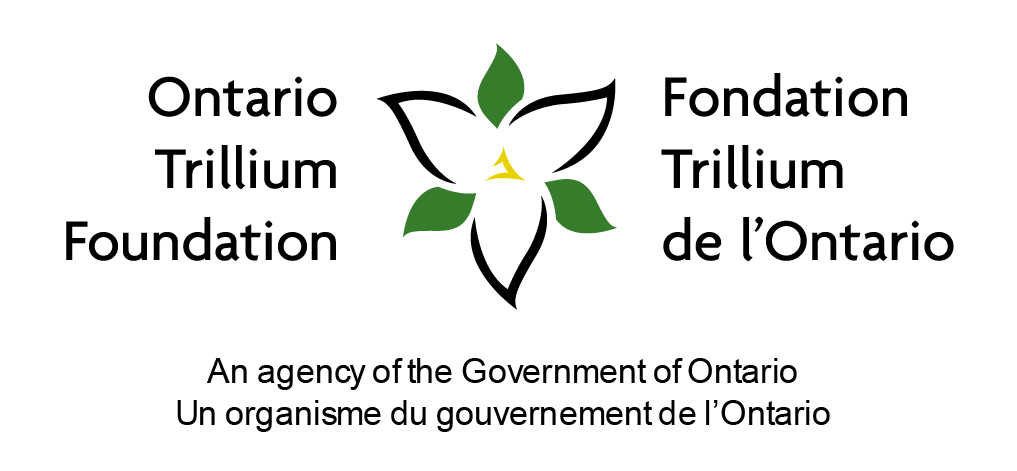
Schedule A:
Plants & Property
Land Characteristics
This planting plan is designed based on the land characteristics identified during the day of the site visit. Plants are chosen according to the soil and light conditions on your property. The number of plants chosen for each planting compartment takes into account the square metre area of the space, as well as the amount of current vegetation cover. Your property is part of ecoZone: 4a
Land Characteristics by Compartment
| Length | Width | Area | pH | Soil | Moisture | Light | Height | |
|---|---|---|---|---|---|---|---|---|
| A | 405m | 8m | 3240m2 | normal | clay | normal | full sun | max 1.5m, max 2m, max 3m |
| B | 405m | 7m | 2835m2 | normal | clay | normal | full sun | max 1.5m, max 2m, max 3m |
| 810m | 7.5m | 6075m2 |
Plant Selection Summary
The following shrubs and trees are chosen for their suitability and survivability given the current soil and light conditions in each compartment on your property, as well as preferable features.
| Plant Species | A | B | Potted | Bareroot | Wildflower |
|---|---|---|---|---|---|
| Swamp Rose | 400 | 400 | |||
| Red Maple | 25 | 25 | 50 | ||
| Pussy Willow | 1000 | 645 | 1645 | ||
| Speckled Alder | 25 | 25 | 50 | ||
| Buttonbush | 1000 | 1000 | |||
| Bur Oak | 25 | 25 | |||
| Red Osier Dogwood | 1000 | 1000 | |||
| Bush Honeysuckle | 500 | 500 | |||
| Fly Honeysuckle | 500 | 500 | |||
| Subtotal | 2475 | 2695 | 0 | 5170 | 0 |
| Totals | 5170 | ||||
Plant Information
The following table summarizes key information about each plant selected for your property.
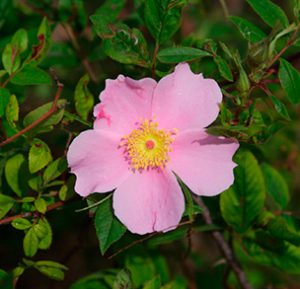
|
Swamp RoseHeight: 2m
The Swamp Rose is a beautiful perennial shrub species that typically grows 2m in height and spreads 2m. It is visually appealing with large pink flowers that last about 6-8 weeks. These flowers have five pink petals, a yellow center, and a pleasant fragrance. This species produces oblong shaped, compound leaves comprised of seven leaflets with serrated edges. The Swamp Rose produces red, round, fleshy fruit called rose hips, which remain on the bush throughout winter. These fruiting bodies provide a winter food source for wildlife, such as Grouse, Black Bears, Deer, and Rabbits. Swamp Rose may be confused with Prickly Wild Rose, which has a similar appearance. However, Swamp Rose can easily be distinguished by the presence of curved thorns, which appear at the nodes of the twigs without any occurring between the nodes. Swamp Rose grows best in moist, rich soils such as swamps and marshy shorelines. However, this species can also tolerate drier, loamy soils.
|
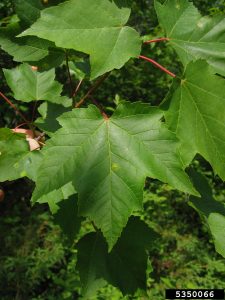
|
Red MapleHeight: 12-25m
The Red Maple is the most common and widespread deciduous tree of Eastern and Central North America. This species can grow 12-25m at maturity. The trunk of this hardwood species is branch free from the base to about halfway up the trunk. When planted in an open area, the trunk can divide and branch out fairly close to the ground. As the tree matures, it develops a short, narrow crown consisting of horizontal and ascending branches. The leaves on the Red Maple grow opposite each other on the branches. During the summer, leaves are bright green on top with a whitish underside. During the fall, the leaves turn a bright red or scarlet colour, from which the name is derived. Prior to leaf development, tree flowers bloom in early May. Red Maple tree flowers are small and red to yellowish orange in colour, growing in clusters on a thin stalk. During June and July, tree flowers develop into reddish winged keys, which hold and disperse seeds. The Red Maple plays an important role in the lumber industry, as its wood is excellent for woodworking.
|
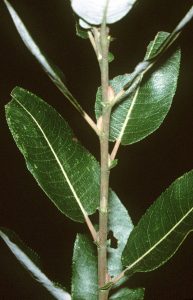
|
Pussy WillowHeight: 6m
The Pussy Willow is a fast growing, deciduous shrub or small tree found reaching heights of 6m, and is from British Columbia to Newfoundland. This species grows from shoots extending from the base of the trunk, creating a multi-stemmed, tall, round bush. The Pussy Willow is an ideal species for bank stabilization and erosion control due to its large, fibrous root system and love of water. This species branches extend from the main shoots and are usually hairy and reddish-brown in colour. The main shoots of Pussy Willow are smooth and greyish-brown, becoming scaly with age. It produces simple, narrow, lance-shaped leaves alternately arranged along the branch. The Pussy Willow yields purple-brown fuzzy catkins which will form long-beaked and finely haired capsules during May and June.
|
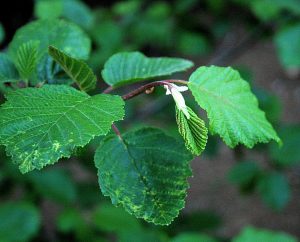
|
Speckled AlderHeight: 8m
The Speckled Alder is a large shrub species which can grow to 8m. This species produces alternate, egg-shaped, and double-toothed leaves with prominent veins. The stem initially begins reddish-brown and hairy, becoming dark brown and hairless with age. The bark also develops prominent orange-white speckles as it matures, hence the common name. The Speckled Alder produces male and female catkins on the same tree. Wingless nutlets drop from the female catkins during autumn. This species is ideal for rehabilitation applications because its roots contain nodules with nitrogen fixing bacteria, which converts nitrogen to a usable form and increases this nutrient in the soil. Speckled Alder requires moist soils and can usually be found in wet organic swamps, along shorelines, and in moist hardwood forests.
|
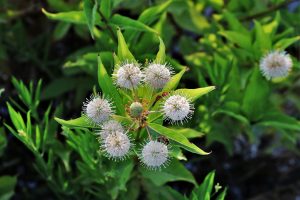
|
ButtonbushHeight: 2 m
Buttonbush is a small to medium-sized deciduous shrub species which typically grows about 2 m in height. This plant may also be known by the common name Button Willow. Twigs are slender to stout and dark red-brown in colour with white speckling. The leaves are bright green coloured, shiny, ovate shaped, oppositely arranged, and have entire margins. The flowers are tiny, tubular, white, fragrant, and appear densely on distinctive, spherical clusters in June. These flowers turn into a dense cluster of seeds, which remain on the plant throughout the winter. The flowers are beneficial for pollinator species, including hummingbirds and butterflies. This is a hardy, adaptable species and an excellent choice for planting on wet shoreline sites.
|
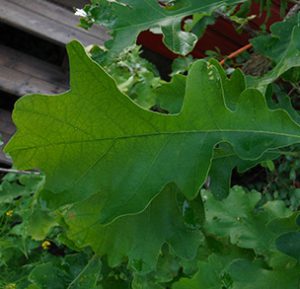
|
Bur OakHeight: 30 m
The Bur Oak is a member of the White Oak family and is the fastest growing Oak species. The Bur Oak is a large, deciduous tree often found growing to heights of 30 m at maturity. This tree features a full, broad spreading crown making it an excellent tree to plant for creating shaded areas. The leaves are simple, closely resembling the leaves of White Oak and are a shiny green colour throughout the spring and summer. Leaves change to a bright yellow-brown during the fall, prior to dropping. During the spring, tiny yellow-green flowers grow on catkins and mature into acorns in a single season, dropping in the fall. The Bur Oak is found in many forest, savanna, and prairie ecosystems with other hardwoods and conifers on a wide range of soils. This species is long-lived, with some trees living up to 300 years old. The root system of this tree is well-branched and deep, making it very drought resistant and an excellent species for land reclamation and restoration applications. Also, the Bur Oak's tolerance to pollution makes it a popular tree for planting in urban areas.
|
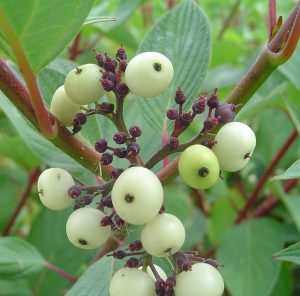
|
Red Osier DogwoodHeight: 1.5-4m
The Red Osier Dogwood is a medium-sized, deciduous shrub native throughout Northern and Western North America which typically grows to 1.5-4m. This species is multi-stemmed with numerous erect and ascending bright red branches that create a loose and spreading form. Leaves produced are simple, two-toned with a dark green upper side and light green underside. They are arranged opposite each other along the branches. During the fall, the foliage turns a brilliant red to dark purple. Clusters of small, creamy white flowers form on the terminal ends of the branches between June and July. The Red Osier Dogwood produces blueish-white fruiting bodies during late summer, which may persist throughout the winter. This shrub's berries provide an important winter food source for numerous species, from large deer to small wintering birds.
|
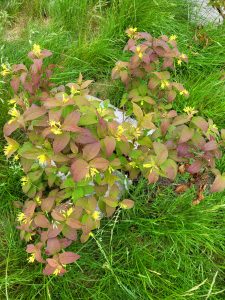
|
Bush HoneysuckleHeight: 1m
The Bush Honeysuckle is a small, hardy, deciduous shrub that rarely grows taller than 1 m in height. The leaves are simple, oppositely arranged, ovate shaped, and have finely toothed margins. During the spring and summer, the leaves are dark green in colour, then in the fall they take on a variety of colours ranging from a deep purple to light yellow. The flowers are small, showy, yellow to orange colored, trumpet shaped, appear in clusters on the tips of branches, and bloom between June and July. The flowers are beneficial to pollinator species, including hummingbirds and butterflies. The roots of the Bush Honeysuckle are fibrous, giving it the ability to form thickets and making it an ideal shrub to plant for erosion control.
|
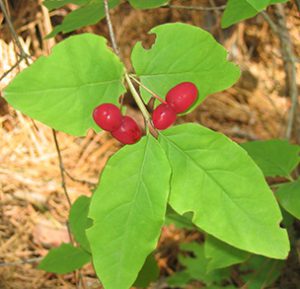
|
Fly HoneysuckleHeight: 1-2m
The Fly Honeysuckle is a medium-sized deciduous shrub that typically grows between 1-2m, and is naturally found throughout Ontario, Quebec, and Eastern Canada. This perennial shrub is multi-stemmed with thin, woody branches and can be grown so that it resembles a vine species. The Fly Honeysuckle's leaves are light green, simple, and oppositely arranged. Leaves are oval in shape and hairless, except at the margins where fine hairs are visible. This species produces flowers which are bell-shaped, white to yellow in colour, drooping in pairs of two, and bloom during late spring. Flowers give rise to large red-orange berries during late summer, which are a favorite to many songbird species.
|
Compartment A
Naturalization Area
 pH: normal
pH: normal Depth: bareroot
Depth: bareroot-
 Moisture: normal
Moisture: normal -
 Soil Type: clay
Soil Type: clay  Plant Height: max 1.5m, max 2m, max 3m
Plant Height: max 1.5m, max 2m, max 3m-
 Light conditions: full sun
Light conditions: full sun
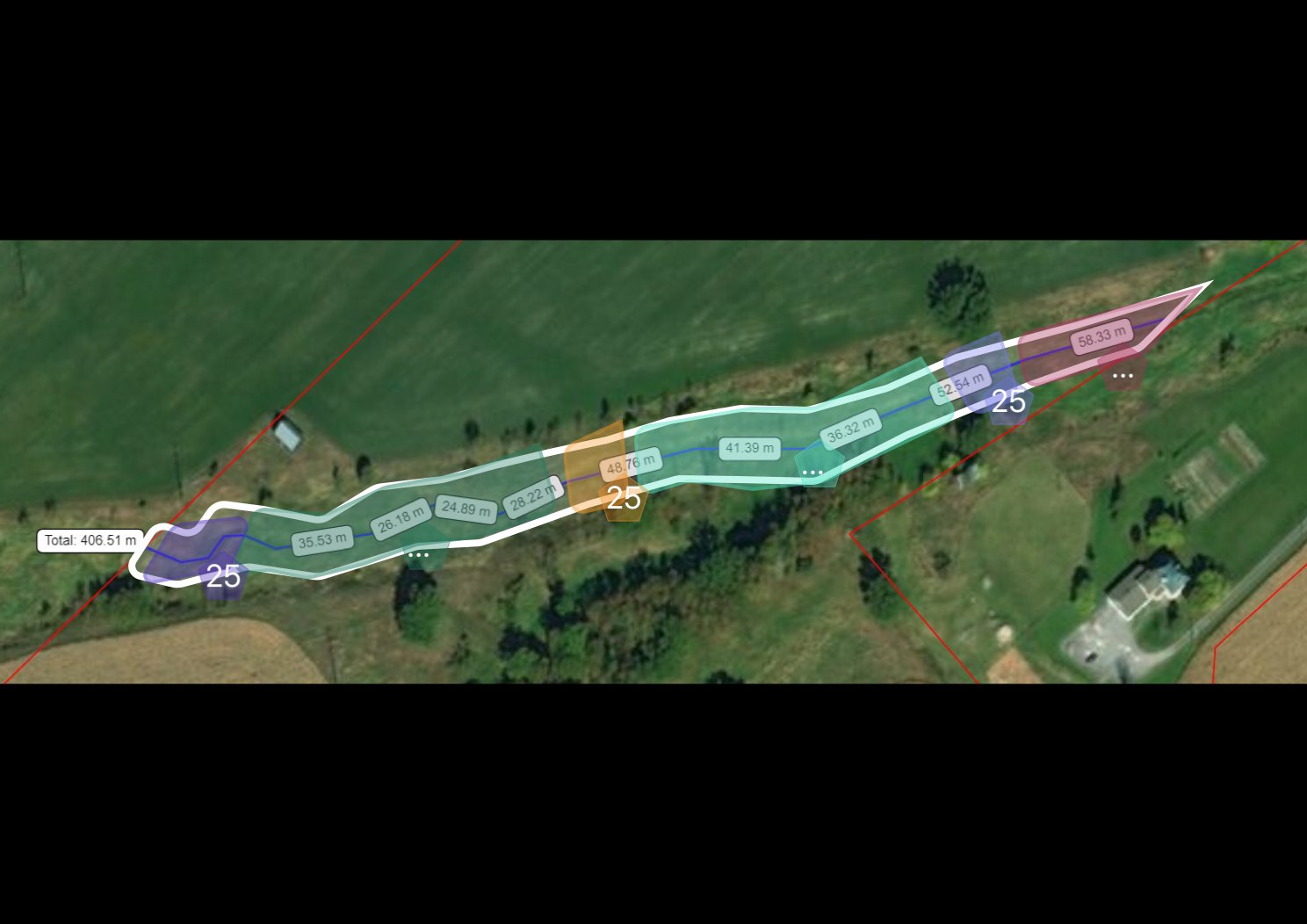
Compartment B
Naturalization Area
 pH: normal
pH: normal Depth: bareroot
Depth: bareroot-
 Moisture: normal
Moisture: normal -
 Soil Type: clay
Soil Type: clay  Plant Height: max 1.5m, max 2m, max 3m
Plant Height: max 1.5m, max 2m, max 3m-
 Light conditions: full sun
Light conditions: full sun
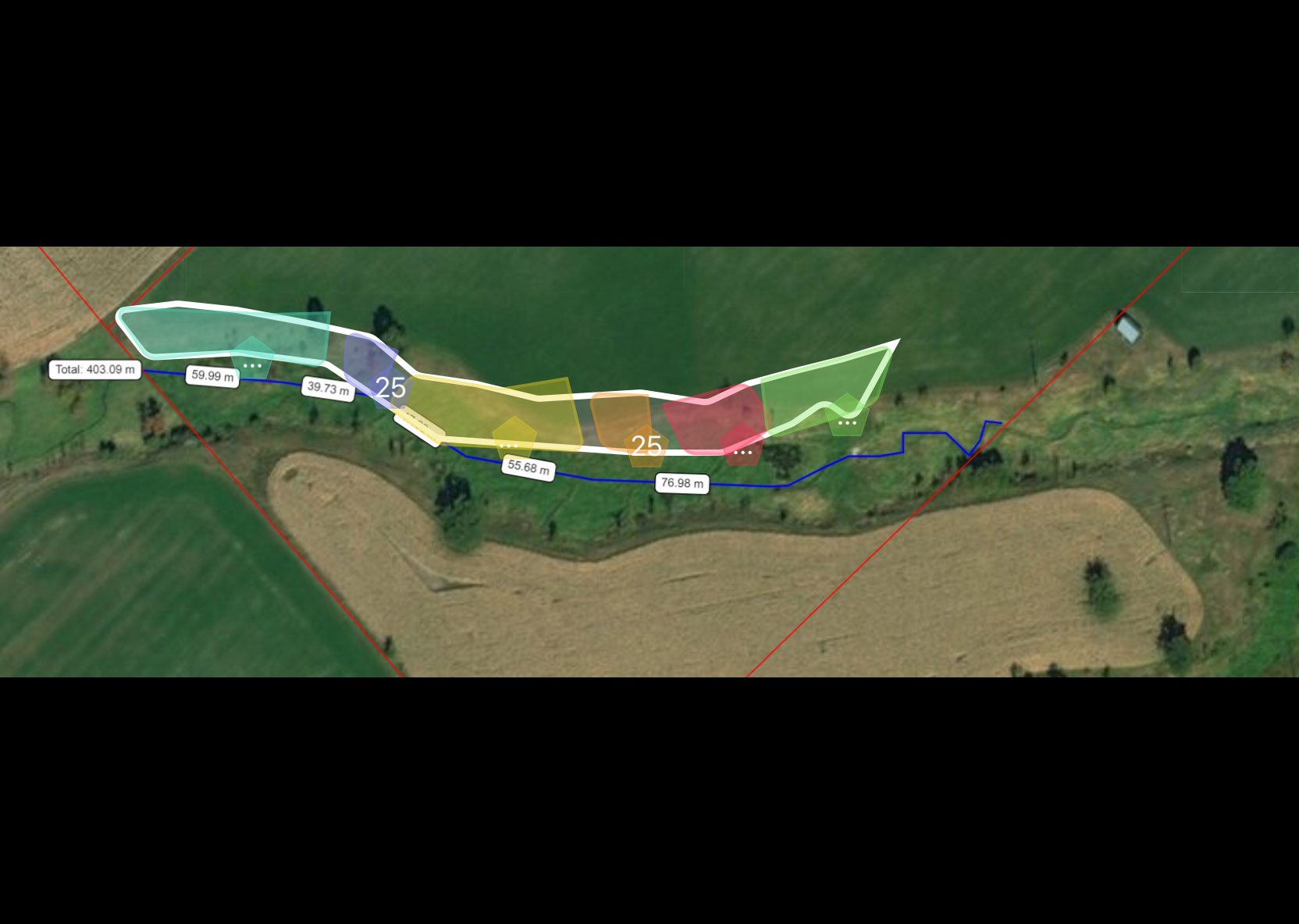
Schedule B
Financial Summary
Project Partners: Watersheds Canada and Muskrat Watershed Council
The following section outlines the total cost of your project. It has been divided into 2 sections; 1- Plants and Material, 2- Services. It also includes the breakdown of the landowner contribution and the portion that will be paid by Watersheds Canada, as outlined in the Project Costs Total table.
The Natural Edge program has received generous funding to help support the costs of plants, materials, and project coordination and delivery, making this program possible.
Bareroot stock |
|||
| Item | Quantity | Cost/Item | Subtotal |
|---|---|---|---|
| Swamp Rose | 400 | 2.25 | 900.00 |
| Red Maple | 50 | 2.25 | 112.50 |
| Pussy Willow | 1645 | 2.25 | 3701.25 |
| Speckled Alder | 50 | 2.25 | 112.50 |
| Buttonbush | 1000 | 2.25 | 2250.00 |
| Bur Oak | 25 | 2.25 | 56.25 |
| Red Osier Dogwood | 1000 | 2.25 | 2250.00 |
| Bush Honeysuckle | 500 | 2.25 | 1125.00 |
| Fly Honeysuckle | 500 | 2.25 | 1125.00 |
| Total Bareroot plant stock | 5170 | 11632.50 |
Tending materials |
|||
| Item | Quantity | Cost/Item | Subtotal |
|---|---|---|---|
| Mulch | 5170 | 1.00 | 5170.00 |
| Tree guards (deciduous only) | 75 | 1.50 | 112.50 |
| Total Tending materials | 5282.50 |
Totals
| 1-Plants and materials | |
|---|---|
| Bareroot plant stock | 11632.50 |
| Wildflower plant stock | 0.00 |
| Tending materials | 5282.50 |
| Plants & Materials | 16915.00 |
| 2-Services | Quantity | Cost/Item | Subtotal |
|---|---|---|---|
| Watersheds Canada's Site visit (Site visit in-kind) | 1 on 06/07/2018 | 0.00 | 0.00 |
| Plant stocking | 5170 | 2.00 | 10340.00 |
| Mulching & tree guard installation | 5170 | 1.50 | 7755.00 |
| Shipping & handling of materials | 25.00 | ||
| Planting plan | 350.00 | ||
| Project management and delivery | 400.00 | ||
| Administration fee | 100.00 | ||
| Services total | 18970.00 |
| Total Project Costs | Subtotal |
|---|---|
| Total project value (including in kind contributions) | 35885.00 |
| Total eligible costs (excluding in kind contributions) | 35885.00 |
| Muskrat Watershed Council's contribution (100% of eligible costs) | 35885.00 |
| Landowner contribution (0% of eligible costs) | 0.00 |
Schedule C
Project Agreement
Stewardship Agreement
Please indicate your agreement to this proposed plan by signing the following Stewardship Agreement and submitting it, along with your financial contribution, to:
Watersheds Canada
115-40 Sunset Blvd. Perth, ON, K7H 2Y4
Plant Availability
Please note that plant species may need to be changed based on plant stock availability at the time of ordering.
Project Completion
Upon receiving your signed stewardship agreement and financial contribution, a date will be booked to complete the project. Watersheds Canada will supply all plants, materials, and planting labour. If there are particular dates that you would prefer, we will do our best to accommodate your requests.
The Natural Edge Stewardship Agreement with Watersheds Canada
Agreement made this 19th Day of the Month of November in the Year 2019.
BETWEEN Tim Egan 819 Egan Line Ontario (Hereinafter called the OWNERS)
AND Watersheds Canada, 115-40 Sunset Blvd, Perth, ON, K7H 2Y4 (Hereinafter called WC)
WHEREAS the Owners and WC have met and discussed plans for shoreline naturalization on the specified area(s) in Schedule A existing on the Owners’ land;
WHEREAS the Owners indicate approval of the project as proposed; and
WHEREAS the project is, or will be for the benefit of the Owners and others;
NOW THEREFORE THE PARTIES AGREE AS FOLLOWS:
1. This Agreement shall be in effect for a period of 5 years, commencing with the date of this Agreement.
2. The Owners and WC agree that the areas where the work is to be performed is as described in Schedule A.
3. The Owners grant WC, its contractors, employees and agents, the right to enter the property to perform the work agreed upon as outlined in Schedule A. In addition, WC, its contractors, employees and agents may inspect the work performed for the purposes of monitoring the project and survival assessment, with prior agreement with Owners for date and time of inspection.
4. The Owners agree to contribute the “Landowner contribution (0% of eligible costs)” and pay the costs indicated in Schedule B.
5. In instances where the Owners are to pay WC for work to be performed (outlined in Schedule A), the Owners agree to provide payments to WC prior to the commencement of that operation. Failure of payment shall constitute a breach of this Agreement and the Owners agree this Agreement will be terminated and thereupon the Owners agree to pay WC the estimated costs of the operations of the project completed, if any.
6. The Owners agree, if necessary, to perform a reasonable amount of maintenance, which is described in the Native Plant Care Guide, available at watersheds.ca.
7. If the contractor is required to perform the work outlined in Schedule A, then the contractor carrying out the work on the land described will be required to take out and furnish evidence of a comprehensive policy of public liability and property damage coverage. The contractor and their workers will be required to be in good standing with the Workplace Safety and Insurance Board prior to performing the work.
8. The Owners agree not to remove, destroy or alter the project without prior consultation and approval of WC. Pruning and trimming planted nursery stock, or adding replacement native nursery stock is exempt.
9. The Owners agree not to mow the planted area.
10. The Owners do acknowledge that WC, its contractors, employees and agents, having performed said works, are not under further obligation with respect to survival of nursery stock, inspection, or maintenance.
11. The Owners, in the absence of negligence, hereby remises, releases and forever discharges WC, its contractors, employees and agents from all claims and demands for injuries, including death, loss, damages and costs in any way related to or connected with installation and maintenance of the work described or resulting from any deleterious effects of the work to the land or to the lands and buildings thereon retained by the Owners.
IN WITNESS WHEREOF the parties have agreed to the contents of this plan; SIGNED:
About this program
This project is created as a co-partnership between Watersheds Canada and Muskrat Watershed Council
About Muskrat Watershed Council
We are a volunteer, community-based, not-for-profit organization with the goal of improving water quality in the Muskrat Lake Watershed by using scientific and local based knowledge. We seek to engage and empower people and communities by promoting best management practices in an effort to identify and reduce nutrient loading from all sources in the Watershed. Through these objectives, we hope to foster economic, societal and environmental sustainability.
This program was created by Watersheds Canada
We believe that every person has the right to access clean and healthy lakes and rivers in Canada. At Watersheds Canada, we work to keep these precious places naturally clean and healthy for people and wildlife to continue using for years to come. We love working with others to meet the needs of local communities, whether you’re a concerned citizen, a landowner, a lake association looking for help, or a coalition of groups interested in activating your local community.

